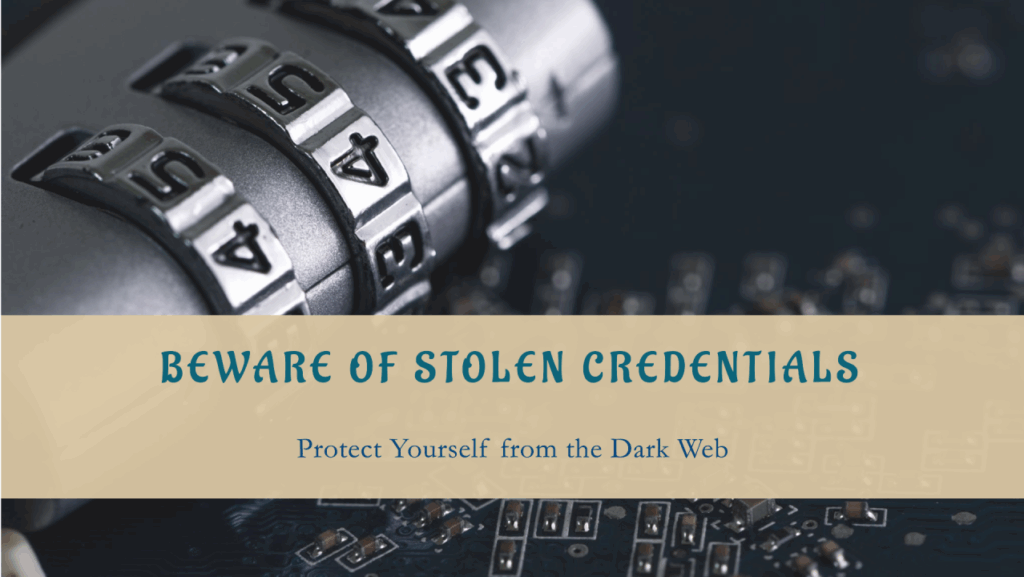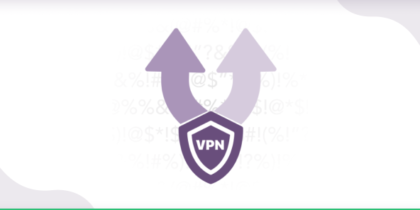Your email could be compromised.
Scan it on the dark web for free – no signup required.
Stolen credentials don’t just sit idle after a breach. Once they’re in the hands of cybercriminals, they enter a highly structured black market. On the dark web, these logins are sorted, tested, priced, and sold—sometimes within hours of being harvested.
From personal streaming accounts to work emails, anything behind a login screen holds value, and nearly every breach feeds this growing market. What happens next isn’t random. There’s a defined process that criminals follow to turn stolen credentials into access, leverage, or profit.
In this blog, we’ll break down the entire lifecycle of stolen credentials on the dark web, from how credentials are stolen to how they’re ultimately exploited in real-world attacks. If you’ve ever wondered what actually happens after a data breach, this is what usually follows.

The Lifecycle of Stolen Credentials on the Dark Web
Over 24 billion username-and-password pairs are circulating on the dark web, according to Digital Shadows. Once stolen, these credentials don’t move aimlessly and pass through a clear, repeatable process designed to extract as much value as possible. Here’s how that journey unfolds, step by step:
Stage 1: Initial Theft
Before anything can be sold, stolen, or exploited, credentials first need to be taken. Cybercriminals use a mix of technical tools and social tricks to steal login data from individuals, employees, and organizations at scale.
Some methods are loud and opportunistic, whereas others are subtle and targeted. However, all of them serve the same purpose: collecting fresh, usable credentials for resale or direct exploitation.
Common Methods of Credential Theft
Cybercriminals use a mix of social engineering and malware to steal login data from individuals, businesses, and large platforms at scale.
- Phishing campaigns and fake login pages: Attackers often send emails or messages that lead to convincing replicas of login portals—banks, email providers, social media, you name it. Victims enter their details, unaware they’re handing them directly to the attacker.
- Infostealer malware: These lightweight programs (RedLine, Raccoon, etc.) quietly collect saved passwords, cookies, and autofill data from infected devices. Once installed, they run silently, extracting the information and sending it back to the attacker in organized log files.
- Corporate or platform-wide data breaches: When attackers break into company systems (whether through vulnerable servers, misconfigured cloud storage, or compromised admin credentials) they often exfiltrate large sets of login data, especially from platforms with large user bases or valuable enterprise credentials.
- Malicious extensions, rogue apps, and MITM attacks: Some attackers use browser extensions or mobile apps that request excessive permissions to steal login info. Others perform man-in-the-middle (MITM) attacks, intercepting credentials as users enter them on compromised networks.
What Gets Stolen
Stolen credentials often include more than just usernames and passwords. Everything from session cookies to MFA tokens can be up for grabs.
- Email/password combinations: The foundation of most stolen credential logs. These pairs can unlock personal accounts, business tools, or be reused in automated attacks like credential stuffing.
- Session cookies: These are often just as valuable as a password. If active, a session cookie can let an attacker skip the login screen entirely and impersonate the user without needing their credentials. On dark web markets, valid cookies bundled with credentials are often sold as “full access.”
- MFA tokens and API keys: Many info-stealer logs include backup codes, one-time MFA tokens, or API keys from services like GitHub, AWS, or Google Cloud. These are credentials in their own right, granting attackers direct access to systems, even when MFA is enabled.
While not credentials themselves, certain types of additional data often come bundled with credential logs such as clipboard content, autofill data, and device fingerprints, which add serious value on the dark web. They help attackers avoid detection, tailor their attacks, or resell more complete access profiles.
Stage 2: Processing & Validation
Once credentials are stolen, they don’t immediately go up for sale. Attackers first process the data, removing expired logins, broken sessions, and irrelevant entries to isolate working logins, active session cookies, and full access bundles. The more complete and reliable the data, the more it’s worth on the dark web.
Log Cleaning and Sorting
After credentials are collected, attackers sift through the log files to remove duplicates, expired sessions, or irrelevant entries. They often categorize credentials by platform, geography, and quality. High-value targets like enterprise SaaS logins or banking credentials are flagged for premium resale or reserved for private buyers.
Credential Testing and Validation
Attackers use automated tools to test whether the stolen credentials still work. These bots log into common services using the harvested login pairs, often rotating through thousands of proxies to avoid rate limits or detection. CAPTCHA solvers and headless browsers help simulate human behavior, making the validation harder to spot.
Telegram Bots and Auto-Sorting Tools
Much of this process is now automated. Telegram bots, some built specifically for log analysis, allow cybercriminals to upload stealer logs and instantly see which credentials are valid—sometimes even with live previews showing which services they work on, from email and streaming to banking and business apps
Stage 3: Marketplace Monetization
Once credentials have been cleaned and validated, they’re ready to be sold. Cybercriminals treat them like inventory—grouped, priced, and distributed across a network of underground marketplaces, chat groups, and forums. How the data is packaged depends on the type of credentials, their freshness, and who’s buying.
Where Credentials Are Sold
There’s no single place where credentials are sold. Instead, they’re distributed across a mix of dark web markets, private chat groups, and long-running cybercrime forums.
- Dark web marketplaces: Sites like Russian Market and Genesis specialize in selling stolen credentials, session cookies, and full access “bots.” These platforms often have built-in search tools where buyers can filter by domain, region, or software type, making it easy to shop for exactly what they need.
- Invite-only Telegram and Discord groups: Some sellers avoid public markets altogether and trade directly through encrypted chat apps. These groups can be highly organized, with daily log drops, custom filters, and automated bots for fast purchases. Access is often limited to trusted buyers.
- Hacker forums and reseller channels: Well-known forums on both the dark web and surface web host credential resellers who offer anything from personal account access to enterprise VPN logins. Some even sell “accounts-as-a-service,” offering guaranteed access for a limited time or replacement policies if credentials go stale.
Pricing and Packaging
The way credentials are priced depends on what they unlock, how fresh they are, and how complete the bundle is. Sellers package them in a few common ways:
- One-off credential sales: These are single sets of login data, often sold based on account type and location. A U.S. Netflix account might sell for a few dollars, while a verified corporate login could fetch hundreds.
- Bulk combo lists: Thousands or even millions of credentials dumped into one file, typically sorted by domain or region. These are cheaper per unit, but less curated. Often used in credential stuffing attacks.
- Subscriptions to live logs: Some stealer operators offer ongoing access to new infections. Buyers subscribe and receive fresh credentials as they’re harvested, usually with filters like “only .edu logins” or “banking accounts from U.S. users.”
Stage 4: Exploitation
Once credentials are purchased, criminals don’t waste time putting them to use. Depending on what the credentials unlock, they might be used for quick financial gain, long-term fraud, or even sold again as part of larger attack chains.
Credential Stuffing and Account Takeover
One of the most common uses of stolen credentials is credential stuffing, where automated scripts try the same email and password combinations across dozens or hundreds of services. If the victim reused their login details, attackers can gain access to banking apps, e-commerce platforms, cloud storage, or even work accounts. From there, they might steal data, make purchases, or resell access to someone else.
High-Value Abuse: BEC, Ransomware, and Internal Access
More valuable credentials are used in targeted attacks. A compromised business email can be leveraged for phishing, invoice fraud, or Business Email Compromise (BEC). If attackers gain VPN or RDP access, it may be sold to ransomware operators or initial access brokers who specialize in breaching corporate networks. These credentials often act as entry points for larger, multi-stage attacks.
Ongoing Abuse and Resale
Some credentials aren’t used just once. They may be passed around, repackaged, or re-listed on different markets. If a victim doesn’t reset their login, the same credentials can be reused months later in fresh campaigns. In some cases, they’re bundled with other data, such as device fingerprints or cookies, to help bypass new security controls or evade detection.
How to Protect Yourself
Most people don’t know their credentials have been stolen until it’s too late. And by the time an account is taken over or a login is sold, the damage is already done. But while you can’t control how attackers operate, you can make their job harder, and reduce the impact of what they steal.
- Use unique, strong passwords: Avoid reusing passwords across services. A password manager makes it easier to generate and store strong, random passwords for each account.
- Enable MFA: Even if credentials are stolen, multi-factor authentication (also referred to as MFA) can block unauthorized logins, especially when paired with app-based or hardware tokens.
- Keep your devices secure: Many credentials are stolen via infostealer malware. Using updated antivirus software and avoiding sketchy downloads or extensions helps stop these infections at the source.
- Monitor for breached credentials: Use dark web monitoring tools or breach alert services tied to your email, domain, or organization. Early detection gives you time to reset logins before they’re abused.
- Act quickly if you suspect compromise: Change passwords immediately, revoke sessions where possible, and review connected apps or login history. For businesses, this includes disabling affected accounts and checking for lateral movement.
- Use least-privilege access at work: Make sure employees have access only to the systems, tools, or data they need for their specific role. If a set of credentials gets stolen, limiting what that account can access helps contain the damage.
Final Word
Stolen credentials follow a clear path, from theft to resale to real-world abuse. The process is fast, organized, and often invisible until the damage is done. Fortunately, with stronger security habits and early detection, you can make it far harder for attackers to turn stolen logins into successful attacks.








